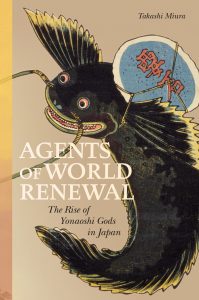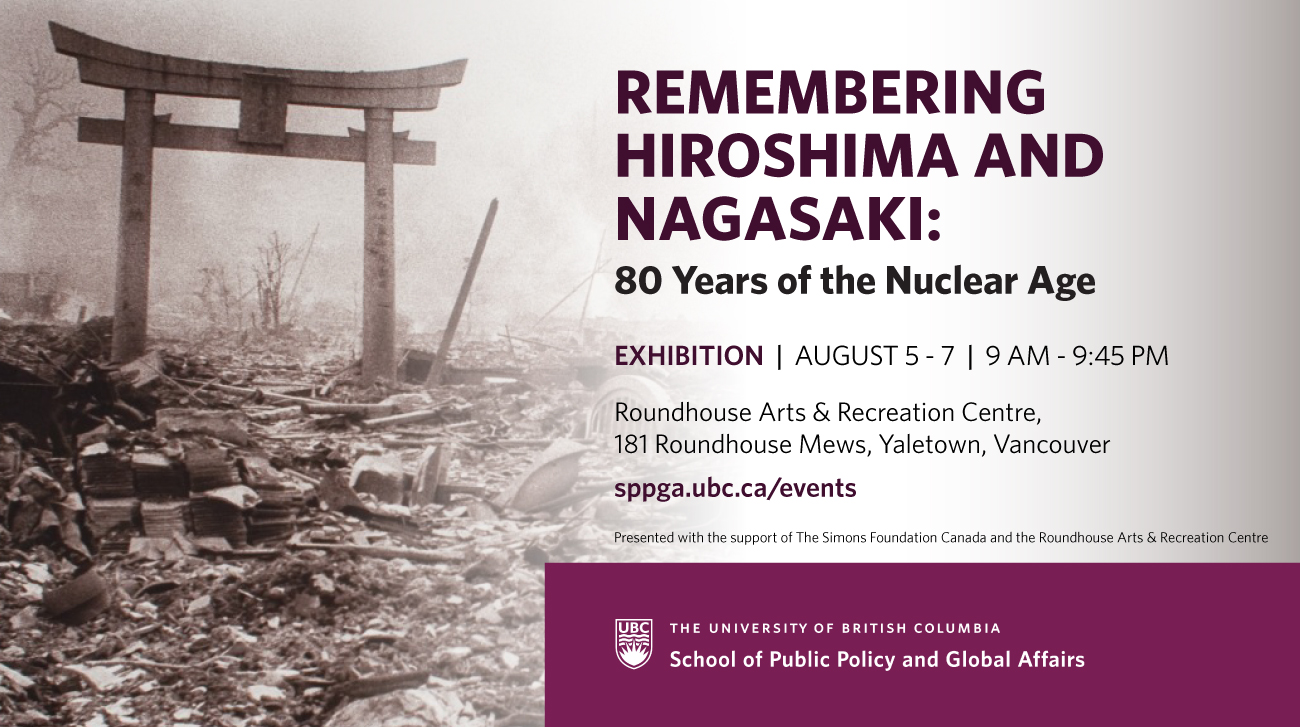Virtual Book Launch – Agents of World Renewal: The Rise of Yonaoshi Gods in Japan


Description
The Centre for Japanese Research (CJR) at the University of British Columbia presents a series of online book launches to celebrate recent publications about premodern Japan. For our November event, author Takashi Miura will be discussing Agents of World Renewal: The Rise of Yonaoshi Gods in Japan in conversation with Gideon Fujiwara and Gennifer Weisenfeld.
Featuring
• Takashi Miura (University of Arizona)
• (Interlocutor) Gideon Fujiwara (University of Lethbridge)
• (Interlocutor) Gennifer Weisenfeld (Duke University)
Time
Friday, November 20, 2020 6-7:15PM in Pacific Time (US and Canada)
Friday, November 20, 2020 9-10:15PM in Eastern Time (US and Canada)
Saturday, November 21, 2020 10-11:15AM in Japan Time
Registration
https://ubc.zoom.us/meeting/register/u5wsf-GtrTorHtDG8zSq5Nqd_FVB1IBDGtzZ
Note
If you do not receive an email with access details by the day before the event, please email bianca.chui@ubc.ca
For disability accommodations, questions, or concerns, please either email bianca.chui@ubc.ca.
We can also be reached via Twitter @ubcCJR
About the Presenters
Takashi Miura is an Associate Professor in the Department of East Asian Studies at the University of Arizona. His research focuses on Japanese religions in the early modern and modern periods. He received his BA and MA from the University of Hawai’i at Mānoa and his PhD from Princeton University.
Gideon Fujiwara is an Associate Professor in the Department of History at the University of Lethbridge, where he also serves as the coordinator of Asian Studies. Gideon studies the history of early modern to modern Japan, focusing on the themes of community and nation, kokugaku (Japan studies), and waka poetry. His first book, From Country to Nation: Ethnographic Studies, Kokugaku, and Spirits in Nineteenth-Century Japan, is forthcoming from Cornell University Press, Cornell East Asia Series in May 2021.
Gennifer Weisenfeld is a Professor in the Department of Art, Art History, and Visual Studies at Duke University and she received her Ph.D. from Princeton University. Her field of research is modern and contemporary Japanese art history, design, and visual culture. Her first book Mavo: Japanese Artists and the Avant-Garde, 1905-1931 (University of California Press, 2002) addresses the relationship between high art and mass culture in the aesthetic politics of the avant-garde in 1920s Japan. And her second book Imaging Disaster: Tokyo and the Visual Culture of Japan’s Great Earthquake of 1923 (University of California Press, 2012, Japanese edition Seidosha, 2014) examines how visual culture has mediated the historical understanding of Japan’s worst national disaster of the twentieth century. She is the guest editor of the special issue Visual Cultures of Japanese Imperialism of the journal positions: east asia cultures critique (Winter 2000) that includes her essay, “Touring ‘Japan as Museum’: NIPPON and Other Japanese Imperialist Travelogues.” She has also written extensively on the history of Japanese design, such as, “‘From Baby’s First Bath’: Kaō Soap and Modern Japanese Commercial Design” (The Art Bulletin, September 2004) and the core essay on MIT’s award-winning website Visualizing Cultures on the Shiseido company’s advertising design. She has just completed a new book project titled Gas Mask Nation: Visualizing Civil Air Defense in Wartime Japan.
About the Book
Agents of World Renewal: The Rise of Yonaoshi Gods in Japan
Published by University of Hawai’i Press


Using a variety of local documents to analyze the veneration of yonaoshi gods, Takashi Miura looks beyond the traditional modality of research focused on religious professionals, their institutions, and their texts to illuminate the complexity of a lived religion as practiced in communities. He also problematizes the association frequently drawn between the concept of yonaoshi and millenarianism, demonstrating that yonaoshi gods served as divine rectifiers of specific economic injustices and only later, in the modern period and within the context of new religions such as Ōmoto, were fully millenarian interpretations developed. The scope of world renewal, in other words, changed over time.
Agents of World Renewal approaches Japanese religion through the new analytical lens of yonaoshi gods and highlights the necessity of looking beyond the boundary often posited between the early modern and modern periods when researching religious discourses and concepts.
Available for purchase from the University of Hawai’i Press (United States) and UBC Press (Canada) in both hardcover and paperback.

